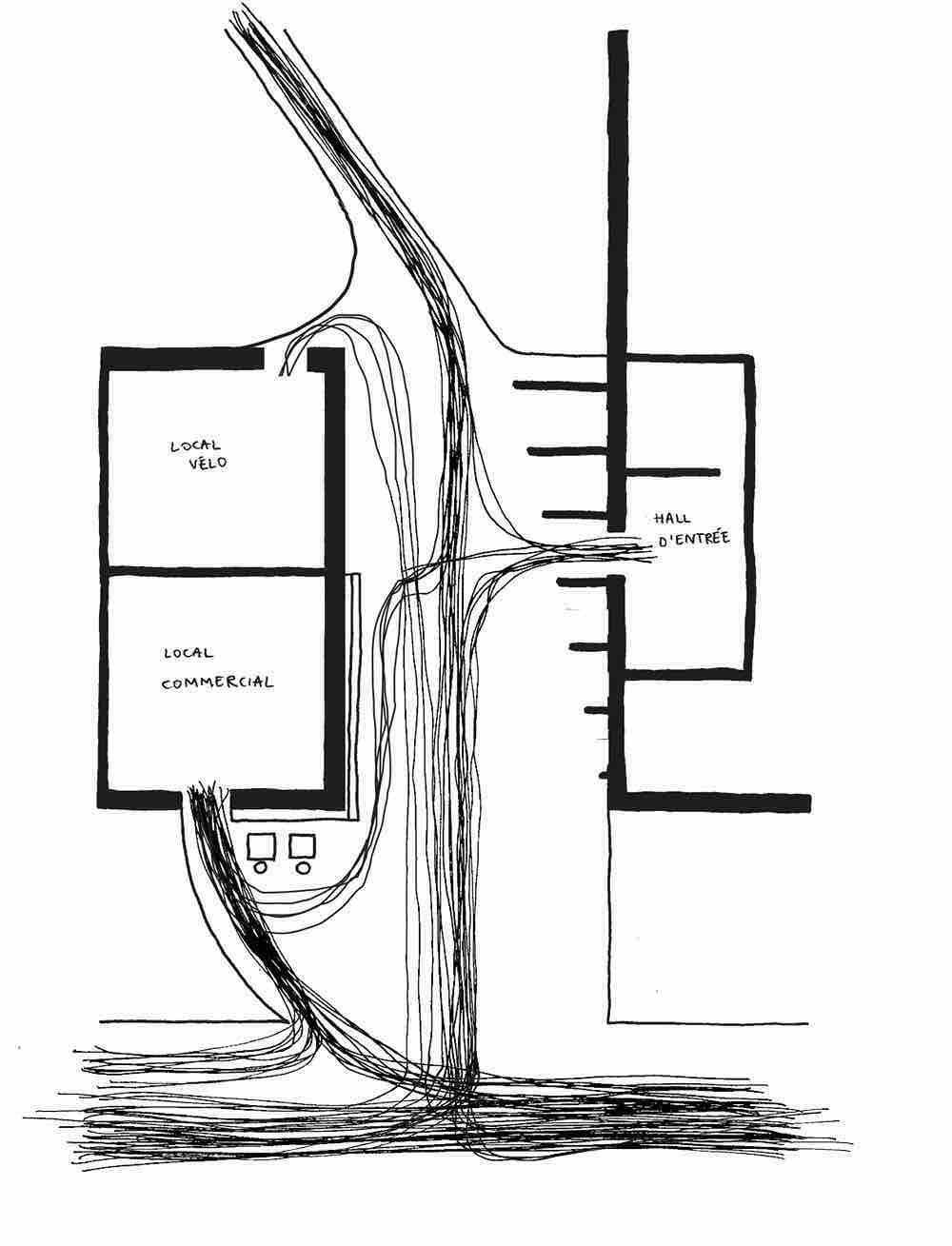Public Space Transformation, 2021-2022
Directed by Katrien Vertenten, NOMOS architects
Duo project with Aline Weiss, HEAD-Genève, Switzerland
Directed by Katrien Vertenten, NOMOS architects
Duo project with Aline Weiss, HEAD-Genève, Switzerland

1:20 model - The passage, its grocery shop, and its slats leading to the secret garden / ©A.Dubuis
Le Passage takes place in a future Geneva eco-neighborhood: les Cherpines. The objective was to transform a place of passage into a collective space participating in the life of the inhabitants. These spaces of transition and circulation do not always respond to defined functions but mark the trajectory of the inhabitants before arriving in their private sphere.
The passage is composed of a slope that connects the alleyway to the heart of the block, quiet and intimate. 14m long and 6m high, it gives access to a grocery shop, a bicycle room and an entrance hall.
A series of oak slats, a sustainable, local and resistant wood, creates the new form of the passage, which narrows and accompanies the passerby to the secret garden. A forced perspective is created and offers a frame on nature. The walls are made of raw earth bricks from the excavation of the building site and a terrazzo created from the aggregates is used for the floor.
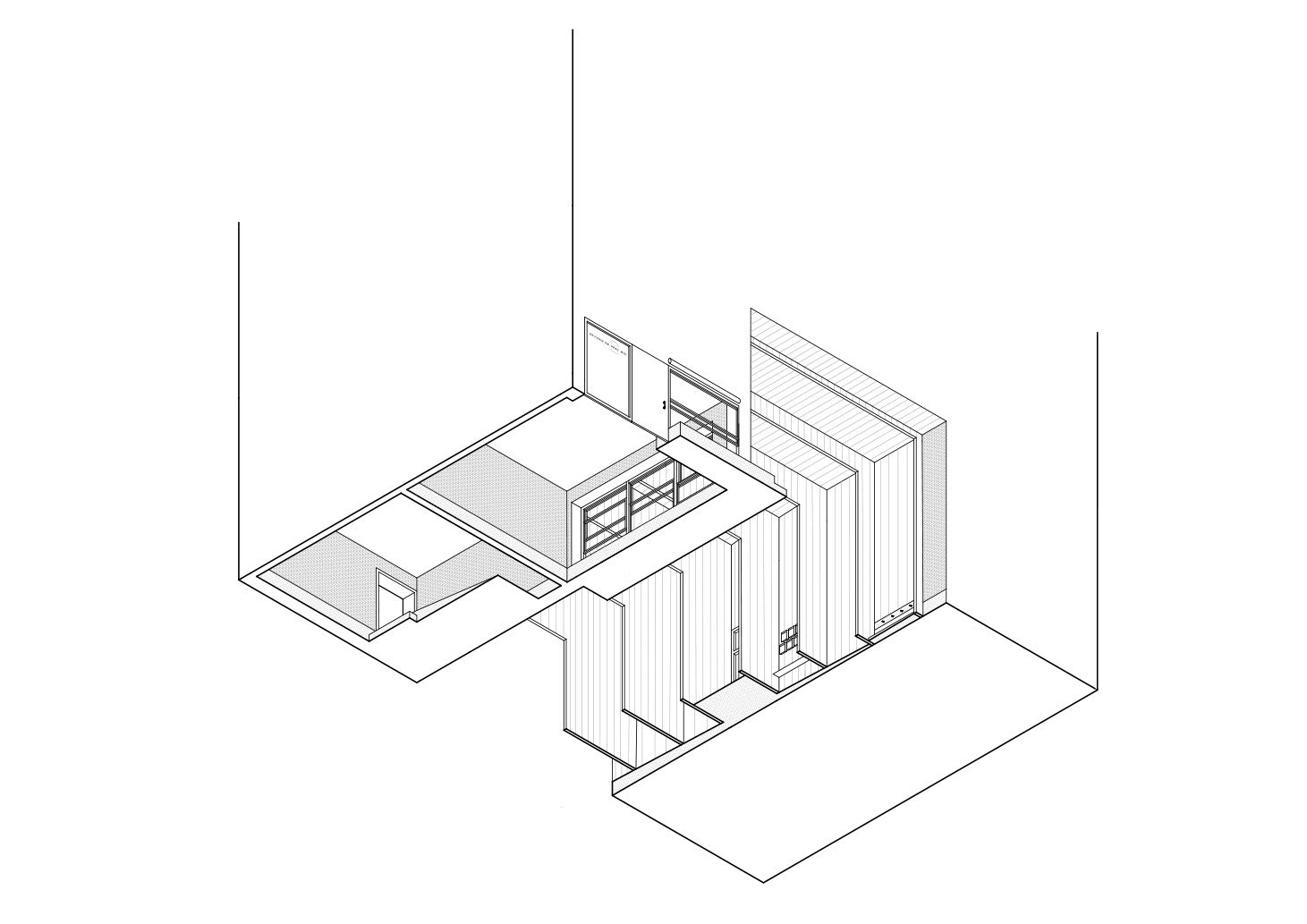
Reverse axonometry / by Aline Weiss
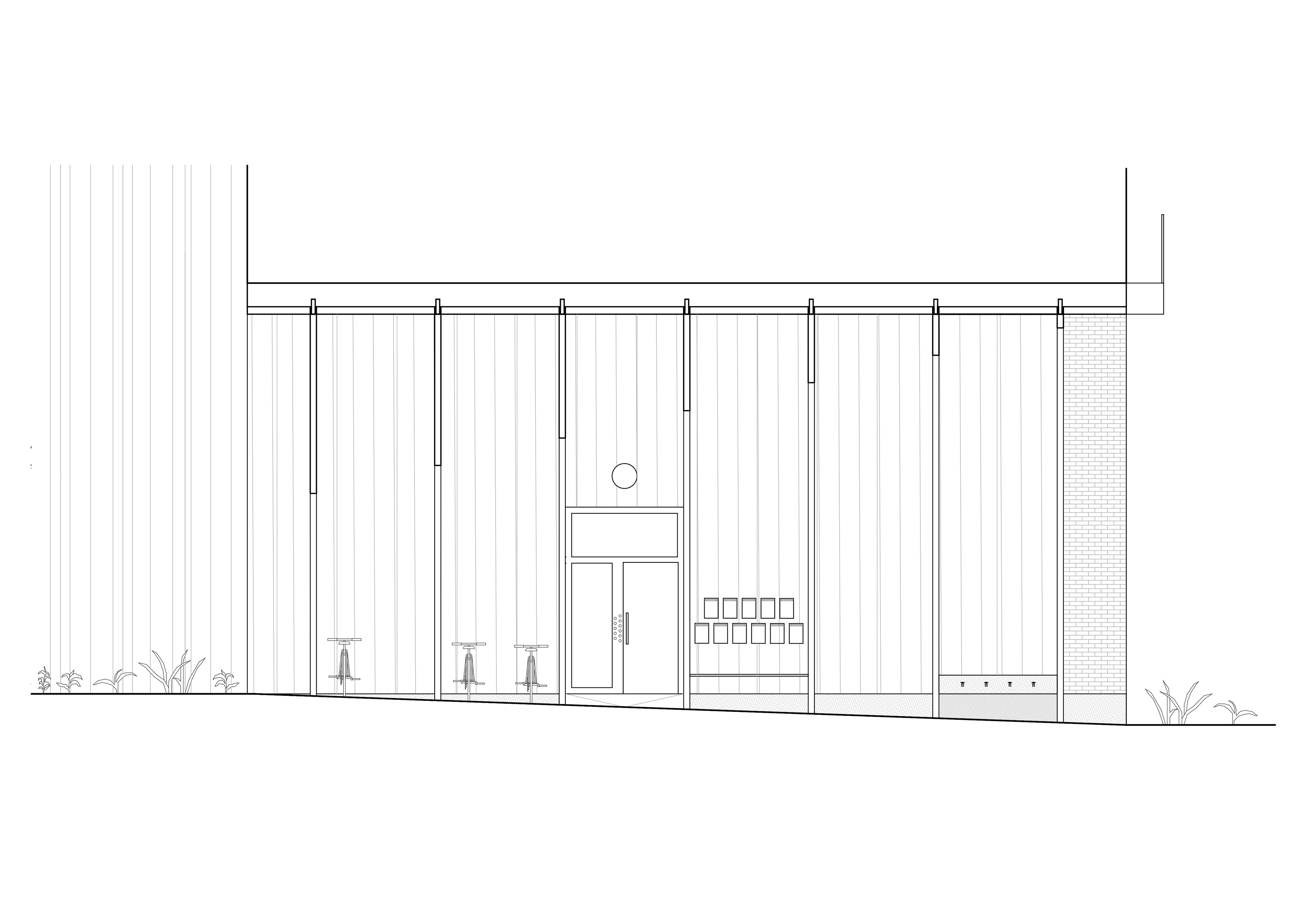
Section on the entrance hall side
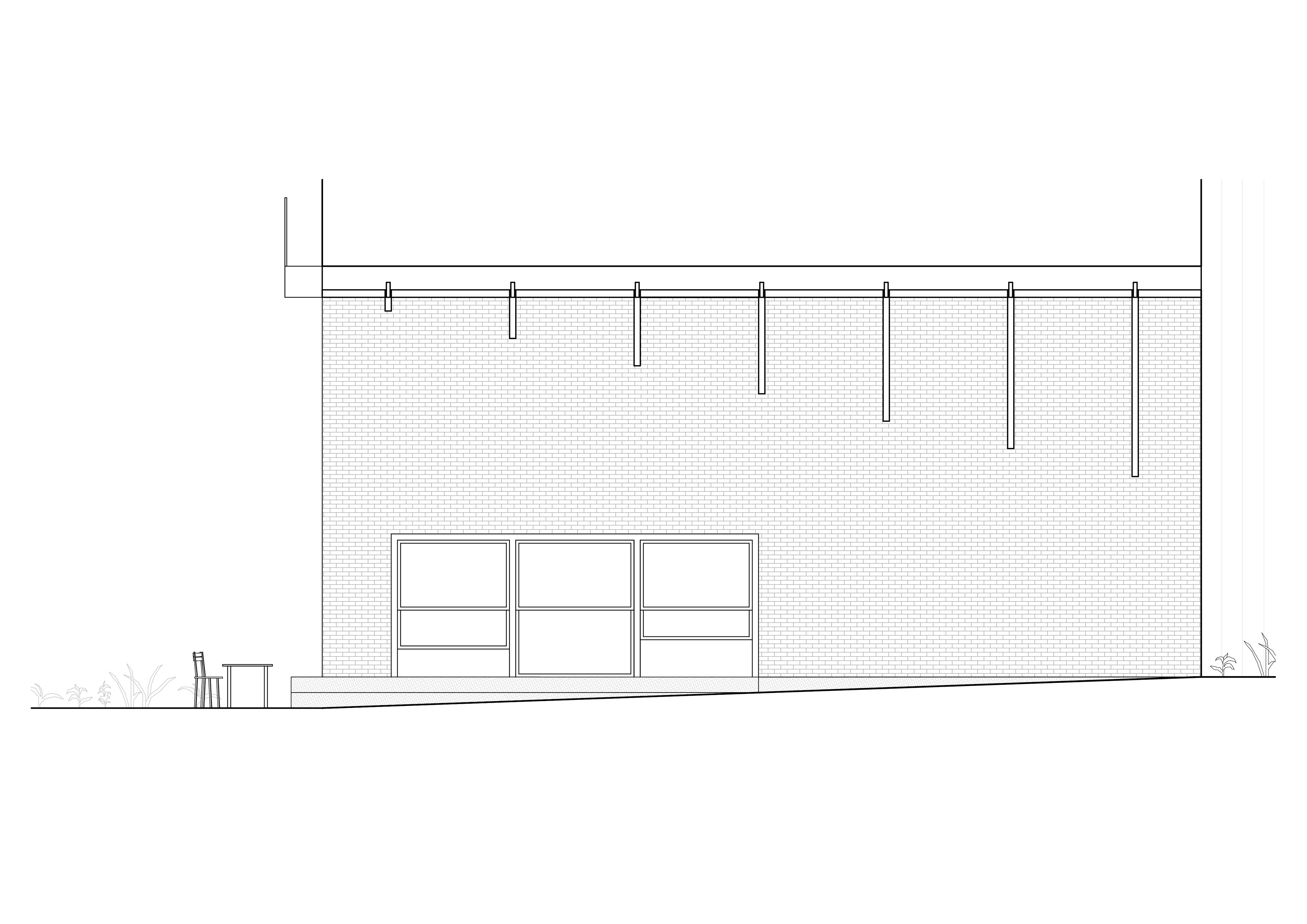
Section on the grocery shop side
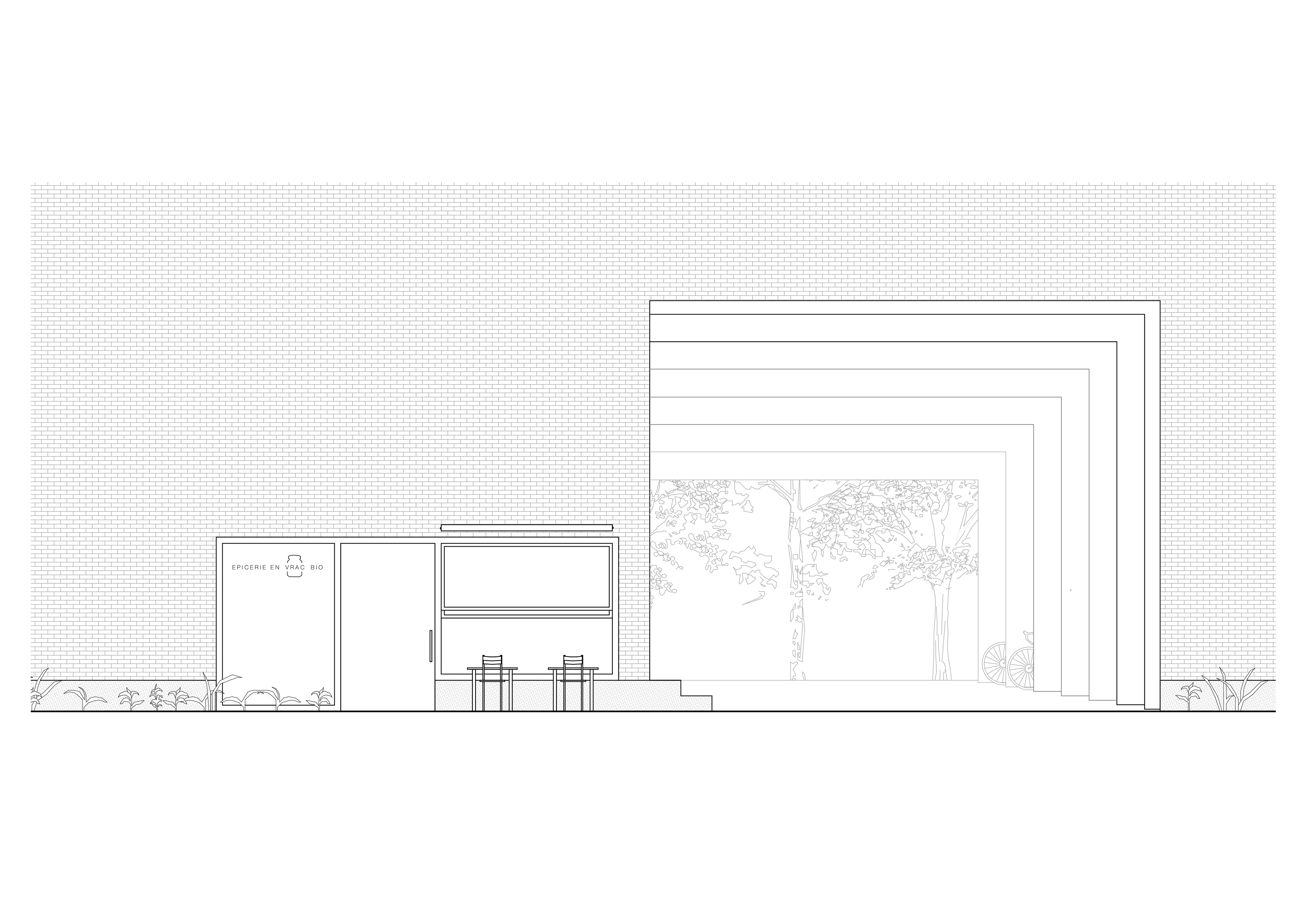
Front elevation on the alleyway side

Front elevation on the garden side
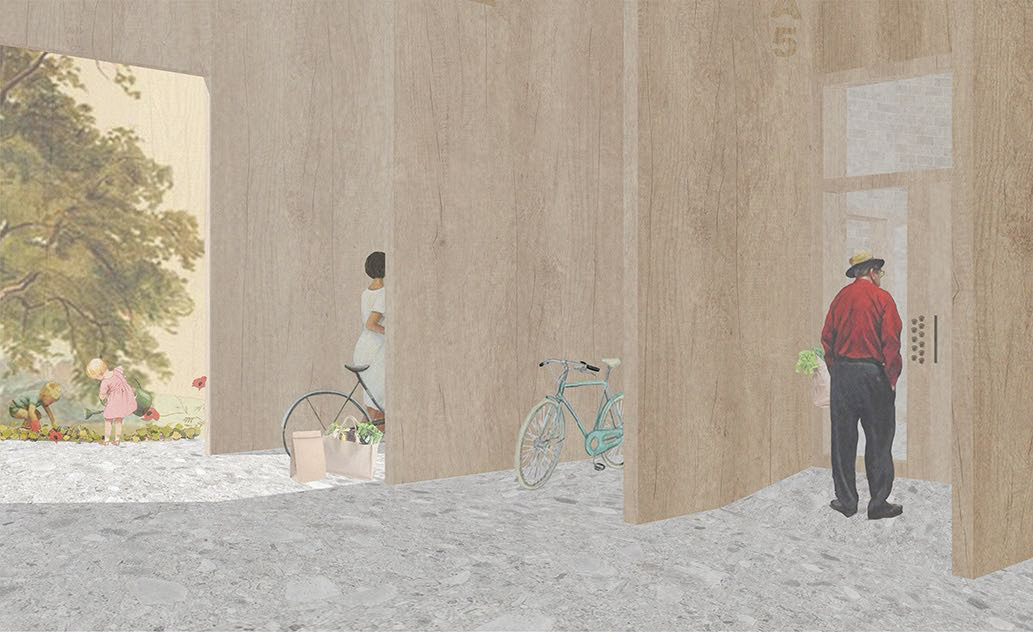
Inside the passage, arriving to the secret garden
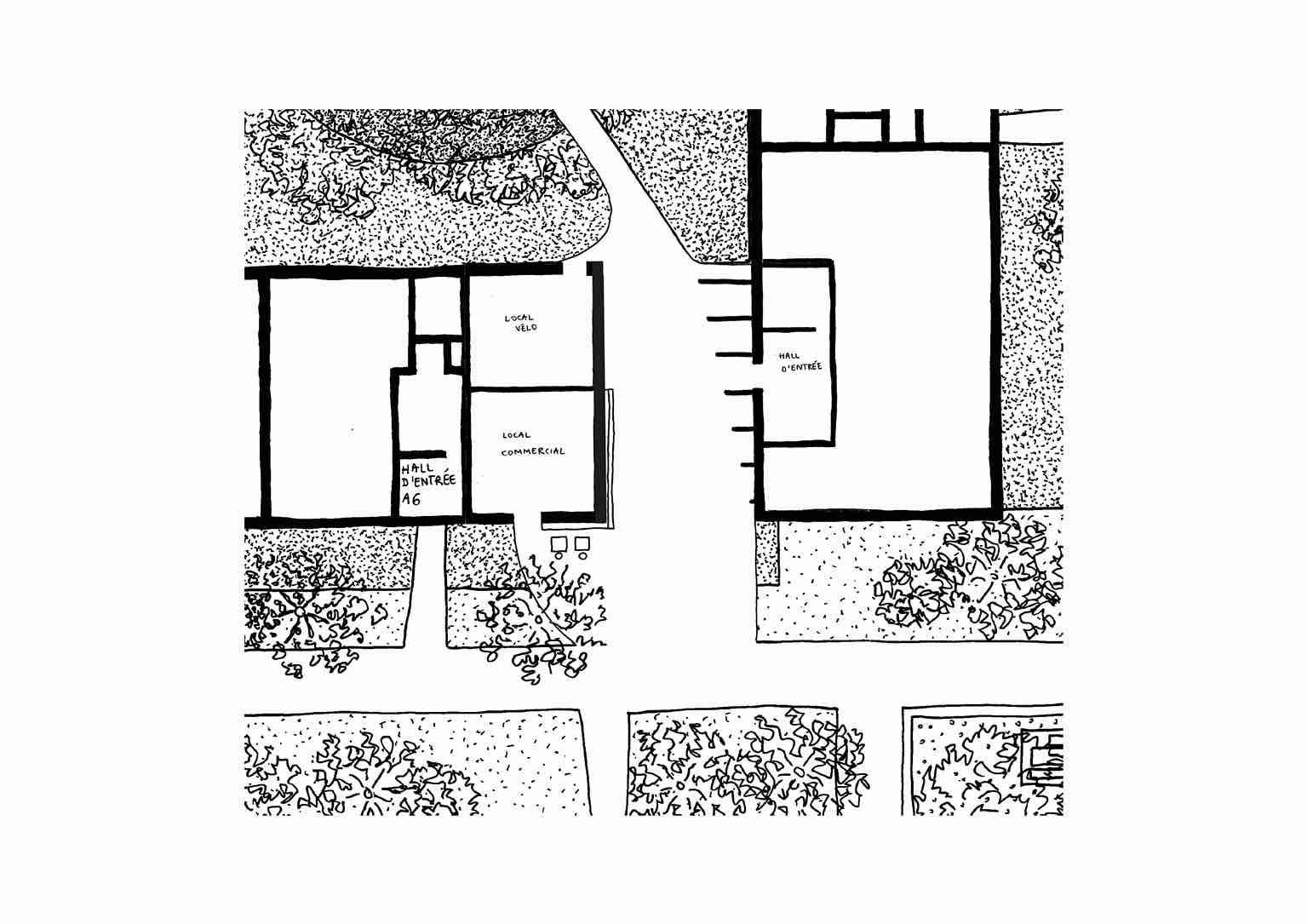
Research Process: Contextual plan
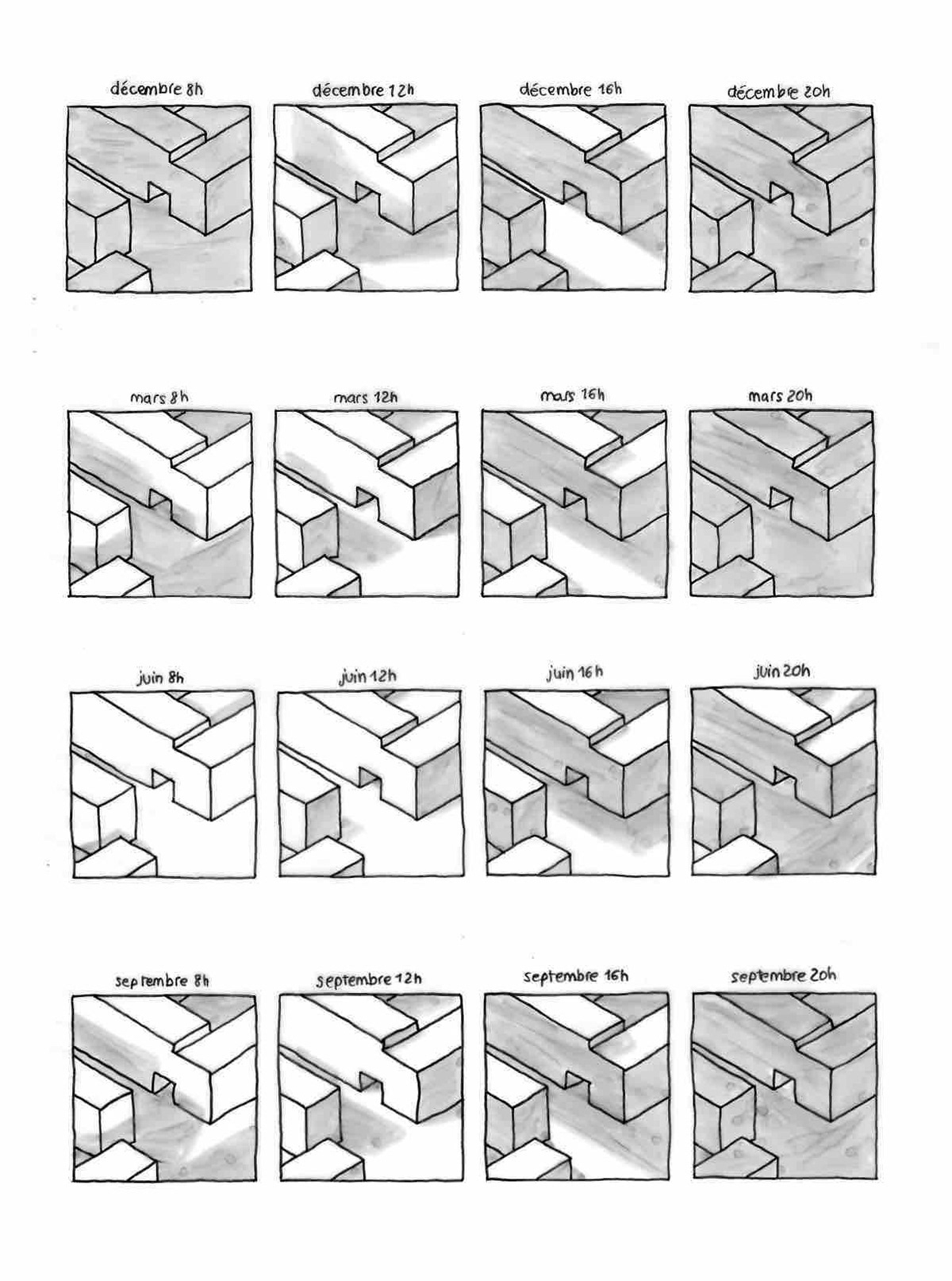
Research Process: Natural light on the passage analysis
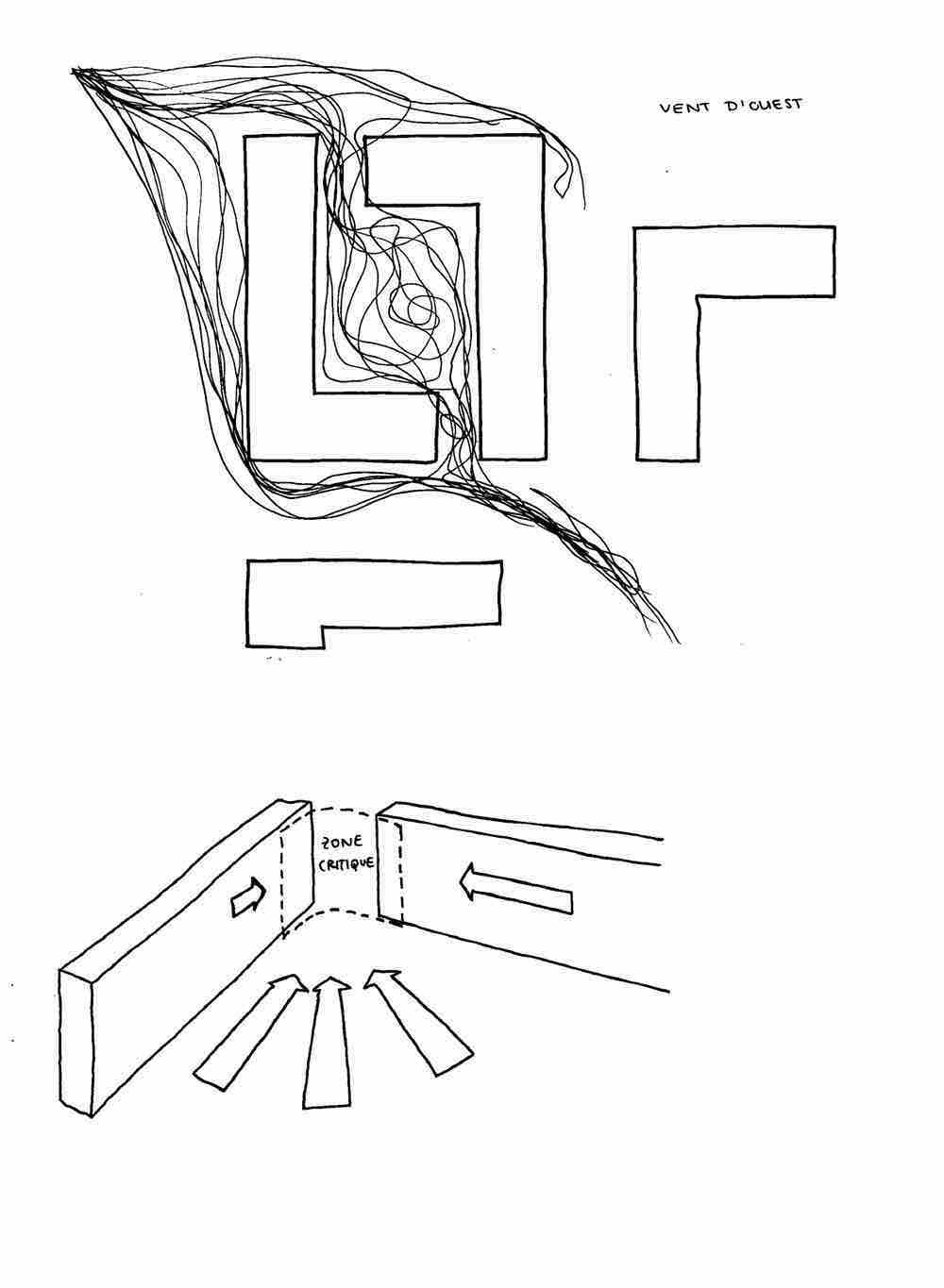
Research process: Wind analysis
